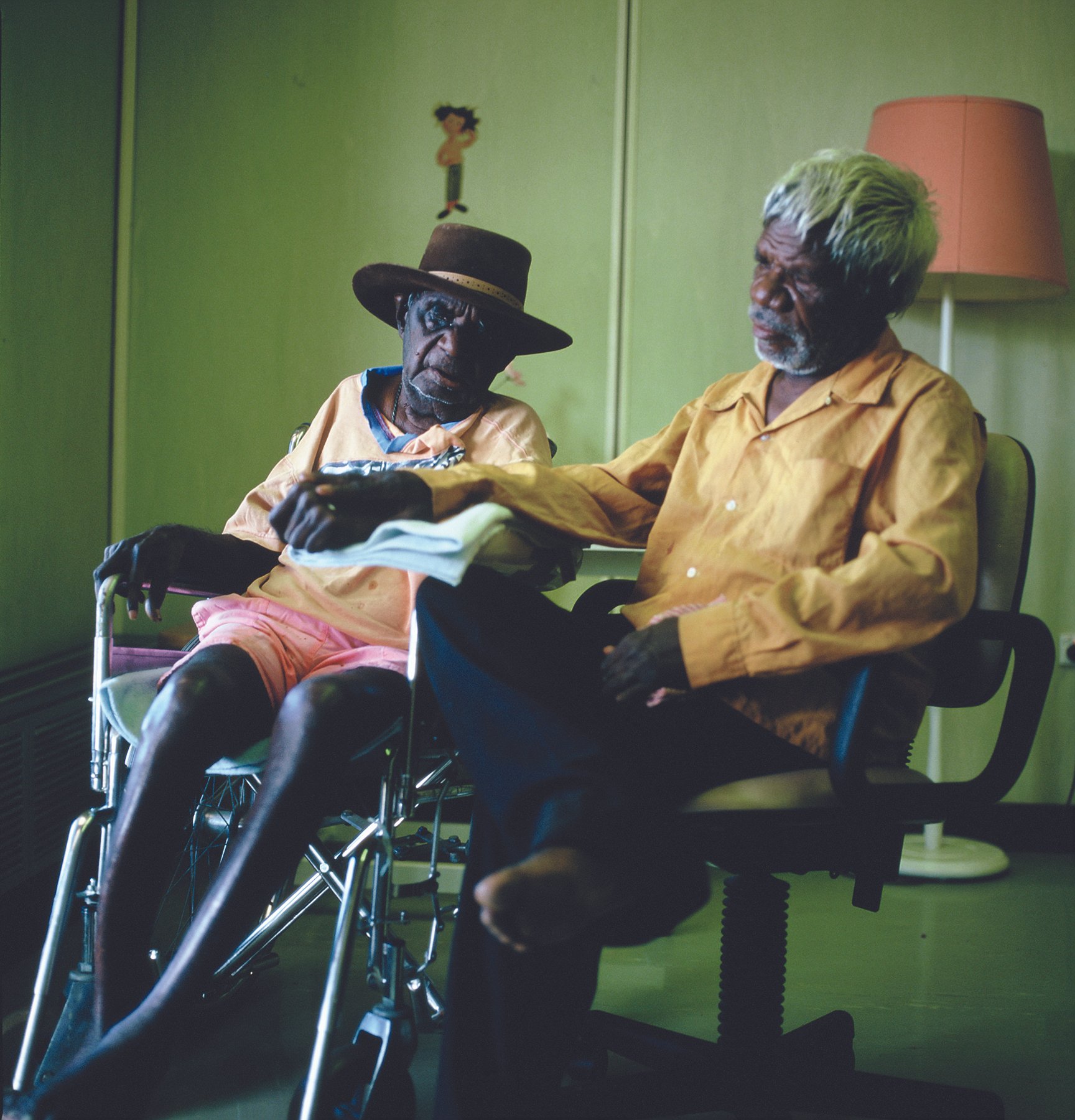PADDY JAMINJI
BIOGRAPHY

Paddy Jaminji, was the classificatory ‘uncle’ of Rover Thomas and a highly respected elder during the establishment of the Warmun Community at Turkey Creek in the early 1970’s. Due to a combination of economic hardship and political upheaval he, along with many of his countrymen, had been displaced from his working life as a stockman, and, by a strange twist of fate, became the founder of the contemporary painting style of the East Kimberley region.
In 1974, Jaminji, Thomas and their contemporaries, viewed the destruction of Darwin by Cyclone Tracy as a manifestation of the Rainbow Serpent, warning them to make a stand against sliding into the Gadiya (white man’s) ways. This cataclysmic event at the region’s centre of European influence became, for Gija people in particular, the catalyst for cultural revival.
While Rover Thomas, who would later become the leader of this new art movement, re-interpreted the dream of his travels visiting important sites throughout the Kimberley with the spirit of a deceased female relative in to a ceremony that included art and dance, it was Jaminji, who was initially the most prolific producer of the paintings that were associated with the story and ceremony, which would come to be known as the Krill Krill or Gurrir Gurrir. Rover Thomas described himself as apprentice and confidante to the older man as Jaminji’s great store of knowledge about the land, its features and spiritual significance, provided the grounding for the new ideas and images that would eventually infuse his unique and evocative ceremonial paintings with their strong traditional links. As these paintings generated interest, and a demand for similar works to those used in ceremonies grew, Thomas and others were emboldened to begin painting themselves.
From their genesis in the mid 1970’s, Jaminji’s paintings stood out as appreciably different to the better-known, multi-hued acrylic dotted works that were being created at Papunya during the same period. The remoteness of the Kimberley encouraged a separate development with Jaminji, and those who followed, choosing to work only in traditional ochres, which rendered a highly textured surface, conveying a warm, earthy quality. Jaminji’s diagrammatic depiction of the landscape, which followed the actual contours of the country, and used the earth itself as the medium, imparted the feeling that the actual traces of the events, which unfolded through time, were embedded in the works.
Jaminji worked as a gardener at the Argyle Diamond Mine during its early years and sold his first paintings to contractors and mine advisers from 1977 onwards. Later, Mary Macha, who ran the Government Marketing Company’s retail outlet in Perth, purchased his, and Thomas’s, paintings and, after leaving the company in 1983, made her garage in to a studio for Rover Thomas and occasionally Jaminji during their time down south. She continued to purchase Jaminji’s paintings throughout the early and mid 1980’s until by 1987 he was almost completely blind.
Jaminji’s most emblematic paintings were of mythic creatures depicted in a figurate style such as devil-devils, and Tawurr, the Half Kangaroo that was transformed into a rock at Elgee Cliffs, the site of an ancient cave painting and Dreaming place. During the Krill Krill ceremony, the spirit stops to acknowledge Tawurr, ensuring the continuity of the spiritual powers that he imparted which are inscribed within the cliffs just as Jaminji’s painting appears to capture the spirit of this ancient being.
Despite their formal composition, Paddy Jaminji’s works emanate a sense of power and freedom befitting the work of a man deeply versed in his tradition who spent most of his life working with cattle and moving them across the land. He was the inspiration behind Rover's decision to paint and went on to inspire many others including, late in his life, Lena Nyabi. The themes for his works were derived from his own beliefs, cultural iconography and working experiences and it is this intimate knowledge of tradition and country that imbues his paintings with their deep meaning.
© Adrian Newstead
References
Akerman, Kim, “Western Australia; A Focus on Recent Developments in the East Kimberley”, in Windows on the Dreaming; Aboriginal Paintings in the Australian National Gallery, Wally Caruana (ed.) Ellsyd Press, Sydney, 1989.
Ryan, Judith, Images of Power; Aboriginal Art of the Kimberley, National Gallery of Victoria, Melbourne, 1993.

